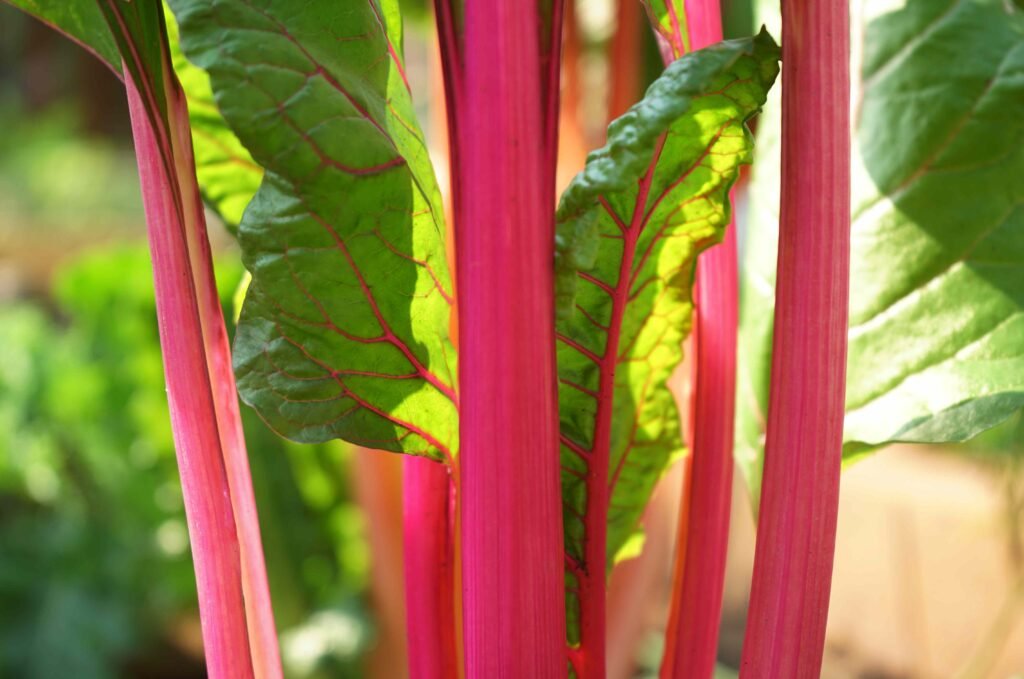Swiss chard might be considered a “leafy green,” but it isn’t only green—its stalks can range in color from yellow and orange to pink and red, earning it the nickname “rainbow chard.”
But this often-overlooked vegetable has benefits beyond its beauty. It’s a nutrient powerhouse, supporting everything from gut health to the immune system. And unlike some more popular greens, Swiss chard thrives not just in the fall, winter, and spring but in the summer months, too—making it a seasonal option at many grocery stores and markets.
“You can grow Swiss chard throughout the heat of high summer—it’s far more heat-tolerant than spinach or lettuce,” Lindsey Beatrice, MENV, communications assistant for the Flatiron Farmers Coalition, told Health.
Curious about Swiss chard? Read on to learn how it supports health—and the tastiest ways to enjoy it this summer.
When it comes to nutrient density, Swiss chard delivers—and even beats out other greens when it comes to nutrients like vitamins A and K.
“Kale and spinach tend to steal the spotlight, but Swiss chard is a nutrient-packed leafy green that adds color and versatility in the kitchen,” Kaitlin Hippley, RDN, LD, CDCES, certified diabetes educator and registered dietitian in Cleveland, Ohio, told Health.
Here’s what to know about the nutritional makeup of Swiss chard:
It Contains Plenty of Antioxidant-Rich Plant Compounds
“Swiss chard contains an abundance of phytonutrients, including beta-carotene, lutein, betalains, and apigenin,” Alison Ellis, MSc, RD, registered dietitian and founder of The Toddler Kitchen in Victoria, British Columbia, told Health.
These plant-based compounds have been shown to have anti-inflammatory and possibly antimicrobial properties, she said. They also act as antioxidants, which are substances that can prevent or delay cell damage by neutralizing free radicals, which can harm cells.
It Has More Vitamin K Than Some Other Leafy Greens
Swiss chard boasts more vitamin K per serving than other leafy greens like spinach and kale. One cup of raw Swiss chard has about 250% of the daily value (DV) for vitamin K, “supporting heart health and blood clotting,” said Hippley.
Vitamin K also plays a critical role in healthy bone formation, making this leafy green an unsuspecting champion of bone health.
It Has a Relatively High Fiber Content
Swiss chard is high in fiber, with one cooked cup containing 4 grams.
Fiber regulates digestion and provides prebiotic support to the gut microbiome, nourishing the healthy bacteria that comprise this microbial community.
Additionally, fiber “promotes fullness by adding volume and slowing digestion, helping to minimize blood sugar spikes after meals,” Hippley said. Over time, frequent and consistent blood sugar spikes can contribute to the development of type 2 diabetes, heart issues, and other problems.
It’s Loaded With Vitamin A, Vitamin C, Magnesium, and Other Nutrients
Meanwhile, this summer green contains a hefty amount of vitamin A—one cup of raw chard contains 2,200 international units, or 73% and 94% the recommended daily value for men and women, respectively. Vitamin A “plays a key role in cell production and healthy vision,” Hippley said.
Swiss chard is also packed with vitamin C, with 12% of the recommended daily value coming from just one cup of raw chard. Not only does vitamin C act as an antioxidant, but it also supports tissue growth and repair, skin, blood vessels, and more.
You can also find a solid dose of key minerals:
- Magnesium (29.2 milligrams per cup, 7% DV)
- Manganese (0.1 milligrams per cup, 5% DV)
- Iron (0.6 milligrams iron per cup, 3% DV)
- Potassium (136 milligrams per cup, 3% DV)
The benefits of Swiss chard might have you eager to pick some up at the store, but what should you look for when shopping?
If you don’t snag this leafy green at your local farmer’s market or farm stand, you’ll find it near the other leafy greens in the produce section—chard should be easy to spot thanks to its brightly colored stalks.
“For the freshest pick, choose bundles with firm stems, avoiding any with brown spots or wilted leaves,” Hippley advised. You should also steer clear of bunches with slimy stems and leaves.
Try to pick bunches with a variety of colors, too—this will not only make your recipes more visually appealing but also ensure a greater range of beneficial plant compounds in your chard.
Once home, store your Swiss chard the same way you would other leafy greens. “Store chard in the fridge in a plastic bag or airtight container with a damp paper towel to keep it fresh. It typically lasts up to a week,” Taiyyibah Moughal, RD, registered dietitian and founder of Empowered Beast Nutrition in Long Island, NY, told Health.
If you don’t plan to use your chard within this timeframe, chop it into bite-sized pieces and freeze it either raw or blanched—it will stay good for at least three months.
Thanks to its mild, earthy, and subtly bitter flavor, the culinary possibilities of Swiss chard are nearly endless.
Unlike kale with its woody stems, Swiss chard has tender stalks—just be sure to give them a head start when sautéing. “Using the stem is a smart way to maximize nutrients while also adding great texture,” Hippley said.
Swiss chard is often enjoyed sautéed with a bit of olive oil, salt, pepper, and garlic. Moughal loves to add yogurt and crushed red pepper to her sautéed chard, while Ellis opts for a sprinkle of turmeric in hers.
But rainbow chard can also be steamed, blanched, or added raw to a variety of recipes, such as
- Scrambled eggs
- Soups
- Stir-fries
- Wraps
- Stews
“I love adding Swiss chard to salads, especially when it’s grown fresh from the garden. Adding a splash of acid, like lemon or vinegar, can help balance its natural bitterness and enhance the flavor,” Hippley said.
Ellis also recommended using plenty of the green in your dishes. “When you cook Swiss chard, it really shrinks down,” she said, “so add more than you think!”

